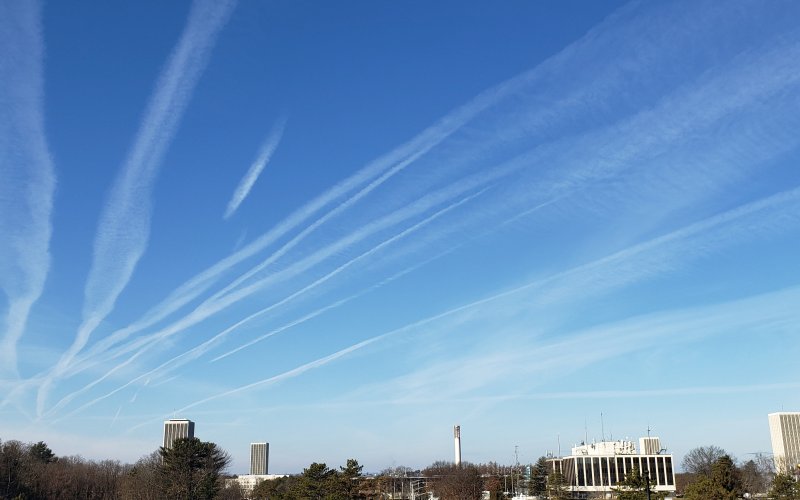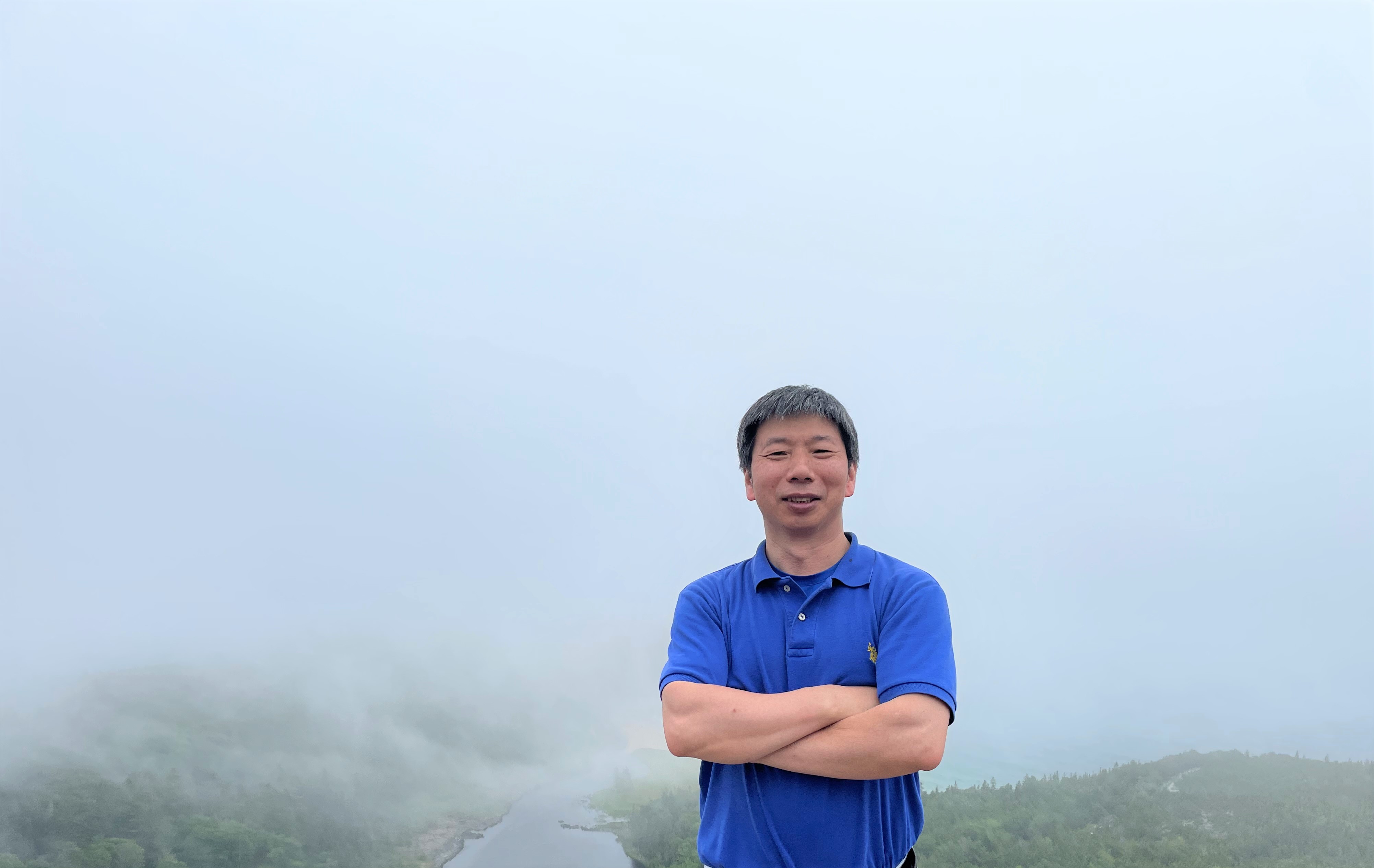UAlbany Atmospheric Scientist Partners with GE to Help Build More Sustainable Aviation

By Mike Nolan
ALBANY, N.Y. (June 27, 2023) — If you’ve ever watched an airplane fly across the sky, you may have noticed thin, white lines behind it — known as contrails, short for condensation trails.
The formation of these wispy ice clouds is a complex process that involves the mixing of hot exhaust gases with cold air. Depending on the atmospheric conditions, contrail ice particles can last for a short time or persist for several hours or longer. Before dissipating, they trap heat that would otherwise be released into space, contributing to climate change.
Fangqun Yu, a senior researcher at the University at Albany’s Atmospheric Sciences Research Center, was approached last summer by a team at GE Research that is developing next-generation combustion engines fueled by hydrogen. The engines are expected to reduce carbon dioxide (CO2) emissions and help meet the aviation industry’s climate goal of net-zero carbon emissions by 2050 on commercial flights.
Yu is now partnering with the GE team to help them better understand the impact these hydrogen combustion engine technologies may have on contrail formation, whose climate impact remains uncertain and is an active area of research.
“Contrail ice particles have a warming effect on the Earth's surface, trapping heat and increasing the amount of infrared radiation that is absorbed by the atmosphere. In fact, studies have shown that they may have a greater warming effect on the Earth's climate than the CO2 emissions from aircraft engines themselves,” Yu said. “The processes controlling the formation and properties of these particles and their dependence on fuel types is still not fully understood and something I’ve taken an interest in as an atmospheric physicist.
"This study, led by GE, will focus on both the formation and properties of contrails from combustion engines fueled by hydrogen. Although these engines may reduce aviation CO2 emissions, it is unclear how it will impact contrails.”
Hydrogen Contrail Research
In his prior work, Yu developed an advanced model for simulating contrail formation and has published a number of scientific papers on the formation and properties of contrail ice particles.
He will be working with the GE team over the next year to share his expertise and run his contrail formation model, helping them design experiments that will be carried out inside the altitude simulation chamber at NASA’s Glenn Research Center in Cleveland.

“Little is known currently about hydrogen combustion, but it could be very important to the future of aviation,” Yu said. “We expect that our start-up experiments at the NASA altitude chamber and model simulations will give us some clues.”
The altitude simulation chamber is part of NASA’s Particulate Aerosol Laboratory, which studies jet contrails at simulated upper atmospheric conditions with altitudes up to 55,000 feet at -135F. The altitude chamber environment and burner settings are individually controlled, allowing the team to test a multitude of test parameters in a dynamic environment.
Yu and the GE research team plan to use the altitude simulation chamber to mimic the exhaust from aircraft engines burning different types of fuels. The purpose is to understand the effects of these fuel types on contrail formation and properties, with a specific focus on hydrogen fuel.
“We will configure our contrail model to the conditions of the altitude chamber and carry out pre-experimental model simulations, aiming to understand what we expect to observe during the GE experiments,” Yu said. “After the experiments, our model results will be compared with lab measurements to interpret the results.”
Zero Emission Flights
After the experiments, which are scheduled for this fall, the GE team and Yu will draft a whitepaper based on the findings, including suggestions for follow-up and future studies.
He expects larger and more comprehensive research projects on contrails associated with hydrogen combustion aviation to follow, including theoretical and engineering developments, field measurements and model simulations. CFM International, a 50-50 joint company between GE and Safran Aircraft Engines, together with Airbus, a manufacturer of commercial aircraft, plan to conduct ground and flight tests of the hydrogen combustion system later this decade.
Yu’s broader research is on size-resolved particle microphysics and aerosol-cloud interactions that affect climate change. He has studied the microphysics of particles in the atmosphere (including contrail formation) and their impact on the environment for more than two decades.




